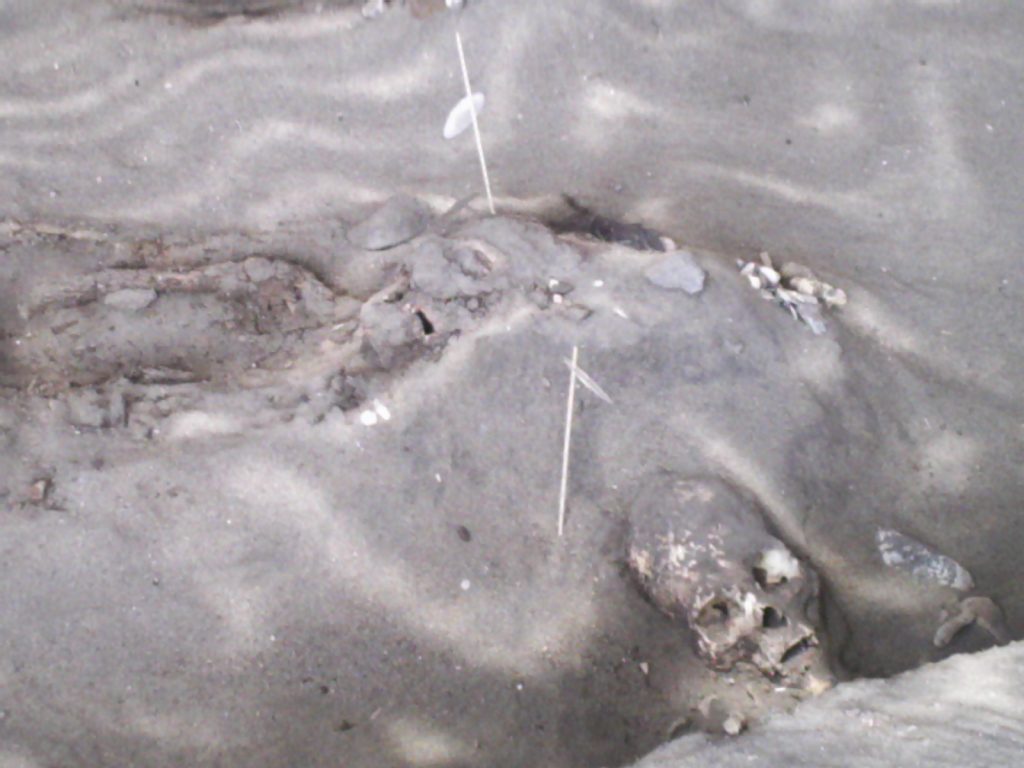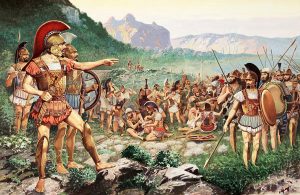When people hear the word mummy, most will think of the pharaohs found in tombs in Egypt. While they are the most well known, what many people may not realize is that the process of mummification has existed long before the Egyptians began doing it. Mummies, which scholars believe to be the oldest, even before recorded history, have been located in Chile, and are said to have belonged to an ancient people known as the Chinchorro.
What exactly is a mummy? A mummy is defined as “dead human or animal body [from ancient times] preserved by embalming or by unusual natural conditions.”1 Many of the areas in which mummies have been recovered all share one similar trait; each is known for extremely hot and dry weather. These climates cause the body to dry up and slow down the decomposition process.2

The oldest mummies belong to a people now referred to as the Chinchorro, who are believed to have lived between 8,000 BCE and 500 BCE. Evidence suggests that their practice of mummification predates Egyptian mummies by as many as two thousand years.3 The Chinchorro lived in the Atacama Desert, which is located in Southern Peru in Chile. They are believed to have been fisherman, living along the coast.4
Mummification was a complicated process. All organs, including the heart, eyes, and lungs were removed, followed by the skin. The body was then dried of fluids and stuffed with sticks, plant fibers, and straw. The body was disassembled by removing the bones and organs, and dried of all liquids. The body was then covered with black clay used to mold a new face, as the bones were put back into the body, along with sticks, clay, and plant fibers. A clay mask was made and placed over the skull, and the rest of the body was coated in Manganese paint, to give it a red color.5

Nearly two hundred Chinchorro mummies have been recovered from the Camarones River region. The earliest of these has been dated at 5050 BCE.6 The oldest mummies were children and small infants, suggesting that mummification was originally a practice carried out by grieving parents to remember their children. Upon further examination of the mummies, it is believed that high arsenic levels in the waters were the cause for high infant mortality rates among the Chinchorro.7
These mummies of Chinchorro today face great peril. Climate changes have caused the mummies to decay, along with many other treasures and artifacts. Microorganisms have grown from moisture in the air that are capable of decomposing skin. Researchers’ new goals are to find ways to preserve the ancient bodies of the Chinchorro people before it is too late.
- Columbia Electronic Encyclopedia, 6th Edition, April 2016, s.v. “Mummy.” ↵
- Salem Press Encyclopedia Of Science, January 2015, s.v. “Mummification,” by James L. Robinson. ↵
- Salem Press Encyclopedia Of Science, January 2015, s.v. “Mummification,” by James L. Robinson. ↵
- Salem Press Encyclopedia, January 2015, s.v. “Chinchorro Mummies,” by Michael W. Simpson. ↵
- Salem Press Encyclopedia Of Science, January 2015, s.v. “Mummification,” by James L. Robinson; Barbara Fraser, “Mysterious Mummies: An Anthropologist and a Geologist Team up to Solve the Puzzle of Chile’s Mummies,” Science World/Current Science Vol. 26 Issue 4 (2012): 8-11. ↵
- Salem Press Encyclopedia, January 2015, s.v. “Chinchorro Mummies,” by Michael W. Simpson. ↵
- Heather Pringle, “Arsenic and Old Mummies: Poison May Have Spurred First Mummies,” Science 324, no. 5931 (2009): 1130. ↵



63 comments
Briana Bustamante
Very interesting article! I was unaware that mummies existed before Pharaohs who were usually found in tombs located in Egypt. It is very interesting that the mummies were first found in Chili. Chili is a place where I wouldn’t picture mummies being found. The mummification process is very intense to say the least. In your article, you were very descriptive and informative, which made learning about mummies easy.
Bailey Rider
I loved learning about the chinchorro mummies! It was new information to me that the process of mummification existed before the Egyptians. I liked the way you organized the article and the information on why the Chinchorro used this process for their young was interesting to learn. I love that science now days can determine the high arsenic levels in the waters that led to the high infant mortality rates. Very good article!
Tina Valdez
It is always interesting to read about something that sheds light upon our preconceived notions about a subject due to previous education. I was surprised to hear that so many Chinchorro mummies were recovered from the Camarones River region. It is unfortunate that they have decayed seeing as they can provide further insight into the mummification process and concept.
Yesenia Cardenas
Great article. Like other people, I thought that mummies originated in Egypt. Although it would be great to learn more information on mummies, I do not think it would be respectful to search for mummy remains.
Christian Lozano
It is really intriguing that there is a large sum of mummies in one place other than Egypt, much less one of the first ways mummification was carried out. This article is very informative, I never knew about the mummies of the Chinchorro. Good Job!
Rafael Ortiz Salas
Very interesting article. Its amazing that mummification was practiced way before the Egyptians. Also all the detail of the process of mummification is really shocking and disgusting. Good article, I enjoyed learning more about mummies. 🙂
Salvador Rodriguez Gomez
Cool! I had no idea that mummification existed before the Egyptians. This was an interesting article but I feel it could have had a little more info or maybe compare the mummies to Egyptian mummies to make it a great article.
Mariana Sandoval
Wow. I typically associate mummies with those found in Egypt so it was interesting to read about mummies found in Chile that predate Egyptian mummies by more than 2000 years. I also thought it was interesting that you pointed out that this mummification process probably started as a way for grieving parents to “preserve” they’re children longer? I hope they are able to preserve as many of these mummies as possible before climate change takes its toll.
Aaron Jaramillo
Great article and interesting article. You provide great information and detail about mummification. It is interesting that the location that mummies have been recovered are all hot and dry areas. The mummification process is interesting, I never knew that they actually removed all of the bodies skin in the process of mummification. Great writing, loved your article.
Jacob Hall
This is a great article. I never realized that the oldest forms of mummification would be found in Chili. As a matter of fact I thought that the oldest mummies would be found in Africa or near the Middle East, but defiantly not in South America. I also never really thought about what climate is necessary for mummification to be possible, I used to think that mummies could be made anywhere. However having them only be in very hot and dry areas does make a lot more sense then having them be in a humid and wet area.